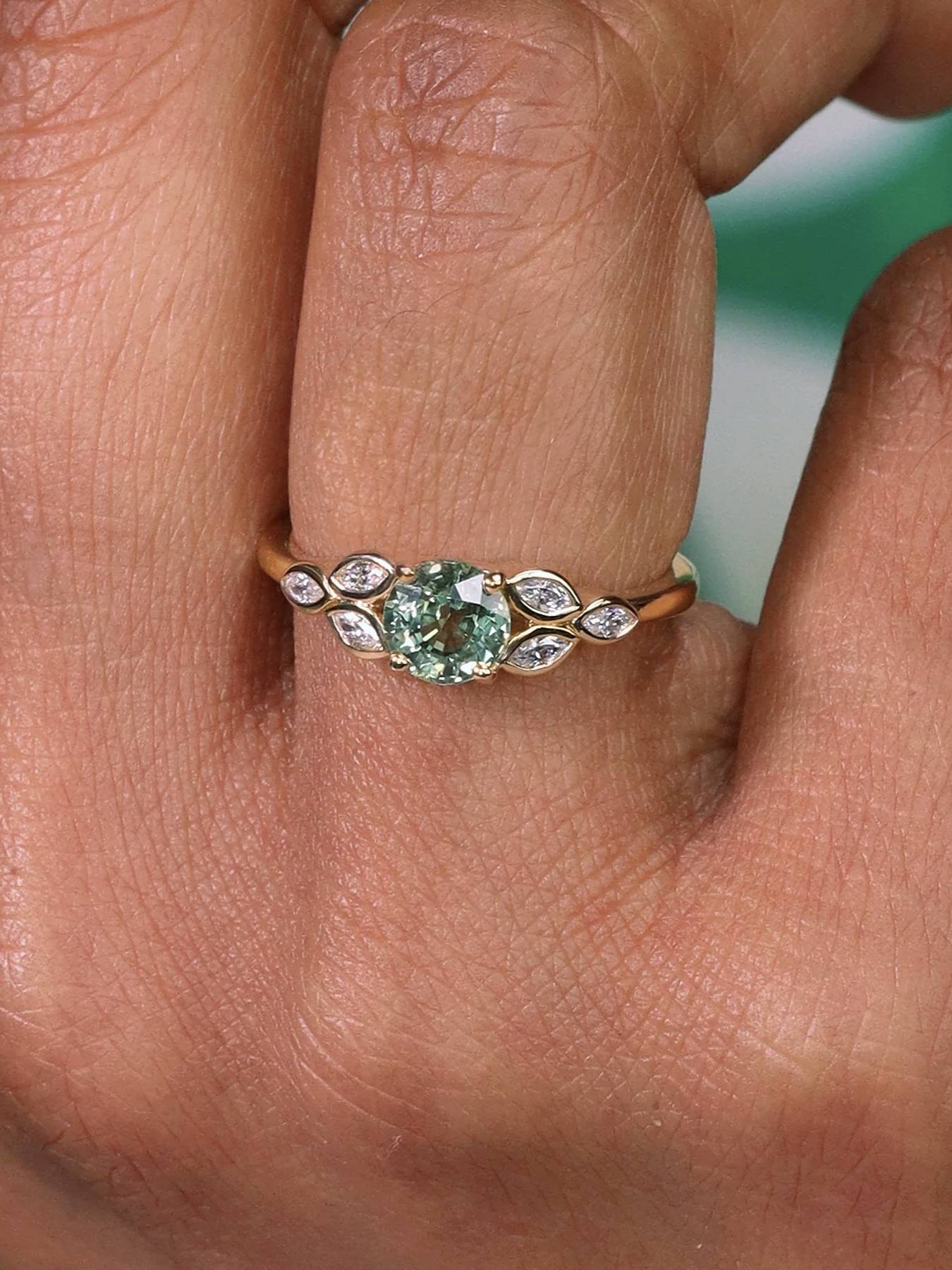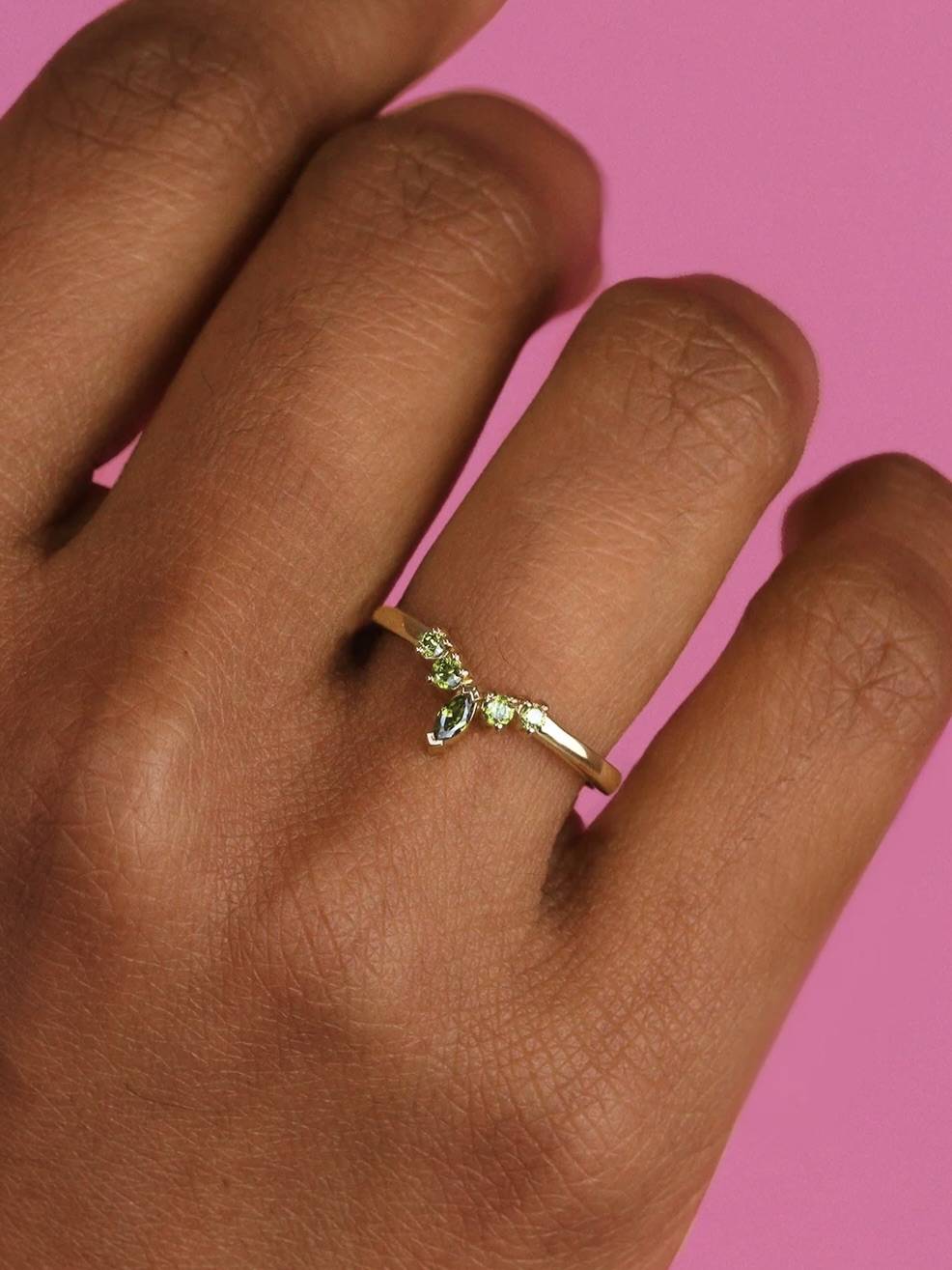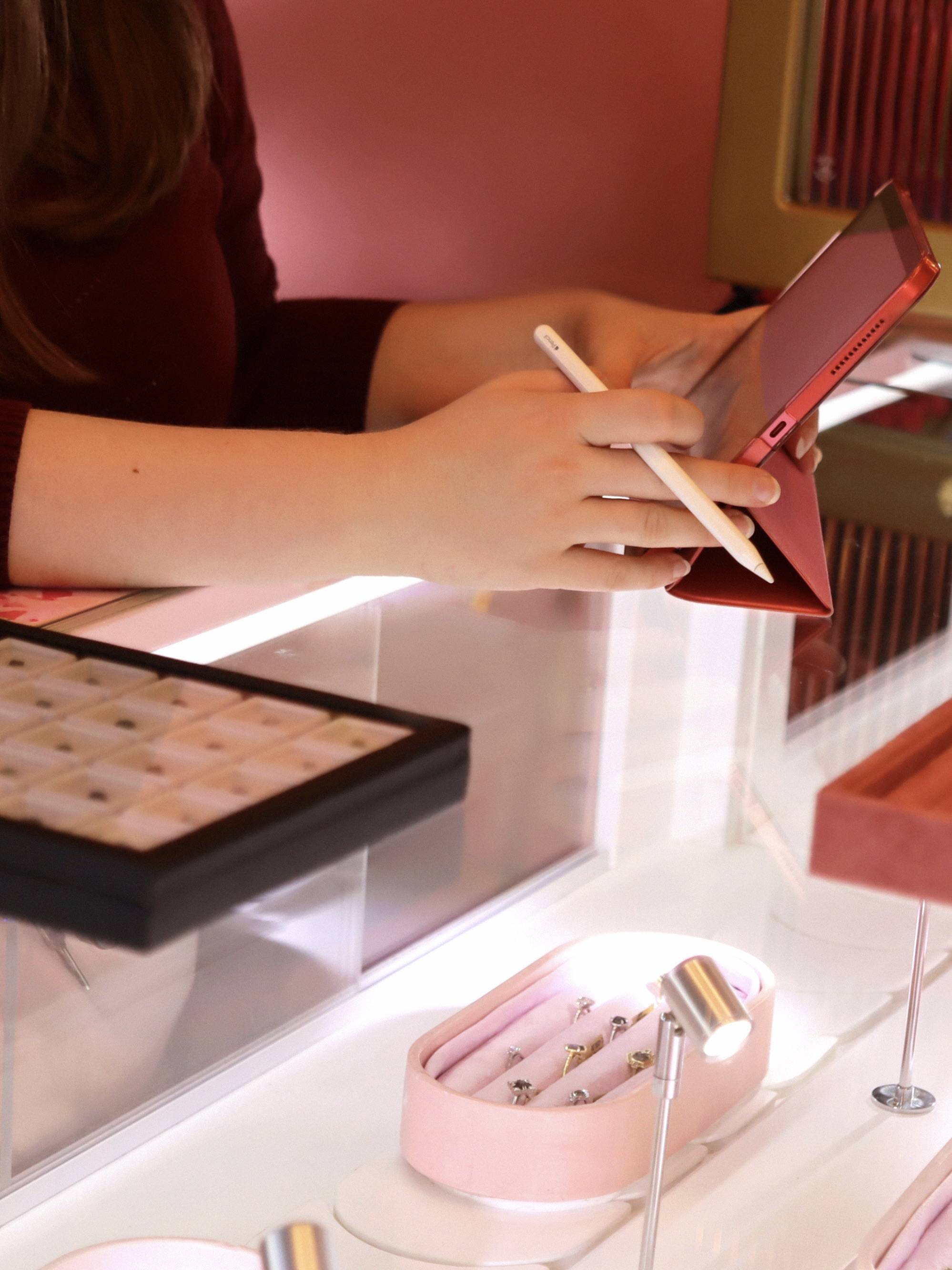GEMSTONE GUIDES
Sapphire Guide

Sapphire engagement rings are a classic for a reason, their deep blues have captivated hearts and imaginations for decades. At Jessica Flinn we love working with sapphires of all colours, from oceanic blues and teals to vibrant pinks and reds, our love for these colourful gems knows no bounds!
What is Sapphire?
Sapphires are one of many gemstones from the corundum mineral family, and its scintillating sibling is the famous ruby. The earliest recorded sapphires were found around 480 BC, and while they are characterised by luscious blue tones, they do come in many colours, such as pink!
This stunning gemstone has been a classic choice for engagement rings and fine jewellery for hundreds of years. And is one of only four precious stones: Diamond, Ruby, Sapphire, and Emerald.
Types of Sapphires
There are variations in every gemstone family, but sometimes a specific variation can gain enough gem-cred to almost overshadow the gem as a whole! Sapphire is the poster-girl for this - you know about blue sapphires - but everyone has heard of Montana Sapphire.
Montana Sapphires
These sapphires are (you guessed it) from Montana, USA. It’s a small distinction that can make all the difference when choosing your gemstone, These sparkly stones are mined in various parts of the American state, most famously in the Yogo Gulch, which has led to an alternative name of ‘Yogo Sapphires’, and are known for their exceptional quality, and beautiful variety.
Ceylon Sapphires
Ceylon sapphires are the quintessential sapphire. Named after their place of origin (Sri Lanka, previously known as Ceylon), ceylon sapphires are what you think of when someone says ‘sapphire’. First discovered in Sri Lanka by its native people around 1000 BC, these natural sapphires were among the first to be found.
These royal blue gemstones are among the most sought after sapphires in the world, fetching the highest prices for their pristine palette. Sri Lankan Sapphires are also known for displaying surprisingly gentle tones, and these cornflower blue sapphires are incredibly popular. This incredible variety gives the maximum flexibility for any jeweller or patron looking for that perfect gem.
Teal Sapphires
Teal Sapphires can be found across the world, but many gem specialists claim that only pure teal sapphires are found in Australia. Montana sapphires are also associated with this special teal colour, and mines in Madagascar have been known to produce sapphires in similar hues.
The Australian teal sapphires mainly come from Queensland, Anakie, and New South Wales. Enthusiasts argue that when you set Australian sapphires vs Montana sapphires, Australian sapphires come out on top due to a higher iron content. This means a deeper colour in your stone! If you’re looking for a stone that packs a punch, but you still want an unusual colour, Australian sapphires might be the way to go!
Browse Sapphire collection
Find your perfect sapphire ring with our collection of sapphire engagement rings, wedding rings and loose gemstones.

Sapphire Meaning
Sapphires are mostly known today as the birthstone of September, and the traditional gift for the 45th wedding anniversary. But there are many sapphire properties that kept this gem as an influential stone in days past. In Ancient Greece the blue sapphire was a symbol of wisdom, yellow sapphires were traditionally thought to be lucky, and some believe that the ten commandments were written on a slab of sapphire rather than stone! Read our guide on the symbolism of sapphires to understand the deep, historical symbolism of this gorgeous gemstone.
Sapphire Value
Sapphires are a very varied gemstone, this means their price point is also going to waver a bit! Each type of sapphire will have its own range of prices, but we have gathered together the average price of sapphires by carat:

Like with every gemstone, there will be other factors that decide the price of your particular gem! A larger sapphire stone with a higher carat may still be cheaper than a smaller and lower carat stone, if it is of a lower quality! If you need help looking into what kind of sapphire you can get for your budget, our sales team will always be happy to advise!

In The Jessica Flinn
Showroom
At Jessica Flinn, we pride ourselves on creating a welcoming and inclusive environment for all. As soon as you're welcomed by one of our lovely team members, you will be made to feel at home. With a complimentary drink of your choice in our gorgeous showroom, lots of stunning rings to choose from, and the expert knowledge of our team members, your Jessica Flinn experience will be nothing short of spectacular.
Sapphire Hardness
Sapphires are one of the highest scoring gemstones on the MOHS scale at 9, along with ruby. This means any kind of sapphire is a great choice for everyday jewellery, as you know your stone will be safe from most standard damage if you take care of it properly. More on sapphire care to come!
The Mohs scale of mineral hardness is a scale used to measure the scratch resistance of various minerals. It assigns a relative hardness value to minerals based on their ability to scratch or be scratched by other minerals. With 10 being the hardest (diamond).

Sapphire Rarity
Sapphires are very rare stones, and are in fact far rarer than diamonds! While finding a sapphire is hard enough, finding a high-quality one is even harder. The highest graded sapphires (AAA) only account for around 20% of the stones found! Sapphires are graded according to their colour, clarity, cut, and carat.
One of the rarest variations of sapphires is the star sapphire. This special star is called an asterism (meaning pattern of stars) and is due to inclusions forming in just the right way to create a star in the centre of the stone! It is incredibly difficult for the gem to be cut in just the right way to preserve and enhance the star. It’s so difficult that this effect will only be found in a cabochon cut stone (rounded top) rather than the classic faceted shape we classically think of.
Sapphire Colours
When someone says sapphire, you can't help but think blue. But sapphires actually come in a wide range of tones and colours, sometimes combining multiple colours in one stone! These unusual gemstones usually come under either ‘parti’ or ‘fancy’ sapphires. Some stones like padparadscha sapphires have their own category, and can fetch prices higher than the classic blue sapphire.
Parti sapphires are, as the name suggests, a party! They are multicoloured, and will display up to three colours in the same gemstone. Parti sapphires tend to be a mix of blue, yellow, or green, but there are a few rare examples of lavender cropping up in the mix.
Fancy sapphires come in a much wider range of colours, all the way from pink and orange to purple and green. Corundum itself is actually completely clear in its pure form (sometimes referred to as white sapphire) but varying minerals in the soil add these fantastic tones to create a rainbow of sapphire colours.
One of the highest valued sapphire variations is Padparadscha, a lovely delicate mix of pink and orange. These gems get their hue from a tinge of chromium (the mineral that gives rubies their colour), however Padparadscha is far rarer than both the traditional blue sapphire and rubies! This does bump up the price tag, but the iconic play of colours in this stone definitely makes it worth it!

Lab Grown Sapphires
Lab grown gemstones are not a new thing, but they are definitely making themselves known in the gemstone market as cost-effective, ethical alternatives to mined stones.
The most important question to ask when talking about lab grown stones is ‘is there any difference between lab and natural gemstones?’. When it comes to sapphires, the answer is yes, but these differences are not that noticeable, and you wouldn't be able to spot them with the naked eye!
This changes with each type of gemstone. While there are no differences between lab grown and natural diamonds, sapphires do have little clues for the experts to spot. This is all due to the processes used to create them!
Synthetic sapphires are created either via ‘flame fusion’ (which sounds like some kind of super power) or the newer technique ‘hydrothermal synthesis’ which mimics the natural heat + pressure = gemstone formation of a natural sapphire stone.
Each method has its own hallmarks. Flame fusion will leave growth marks or colour lines, and hydrothermal synthesis will sometimes cause inclusions in a nail head shape - neither of which you would find in a natural stone.
Caring For Your Sapphire
Every gem deserves the right care. So, if you want to keep your sapphire safe and sparkling there's a few tips for you on just how to treat this gem!
Do store your sapphire jewellery by itself. Sapphires are hard wearing gems, but they can still be damaged, especially by other sapphires! If you have a jewellery box full of these treasures, don't keep them loose! If two of your sapphire rings knock against each other the stones may become scratched. Keep them in separate ring boxes, pouches, or in a structured box to keep them upright!
Don’t wear your sapphire jewellery during sports. This should be a no-go with any jewellery, as it can be dangerous for both you and your gemstone. You should avoid any kind of overly physical activity to avoid potential knocks, claws catching or breaking, dents and stone losses! This includes swimming as chlorine and salt water can be especially harsh for your sapphire!
Don’t wear your stone while cleaning. Especially if your sapphire is set in a ring, you need to be wary of cleaning products and cosmetics. Coming into contact with bleach is one of the worst things for your stone! Many sapphires with inclusions are treated with heat or have the inclusion filled with lead-glass to improve the structural stability and appearance of the stone. Bleach and lead-glass are not friends! So pop your jewellery back in its box while you tackle the house.
Find Your Dream Sapphire Ring with Jessica Flinn
At Jessica Flinn, we specialise in working with the finest gemstones, all of which have been sourced in the most ethical ways possible. Take a look at our collection of sapphire engagement rings to find your perfect ring, or contact the team to begin your bespoke or custom ring design journey.







